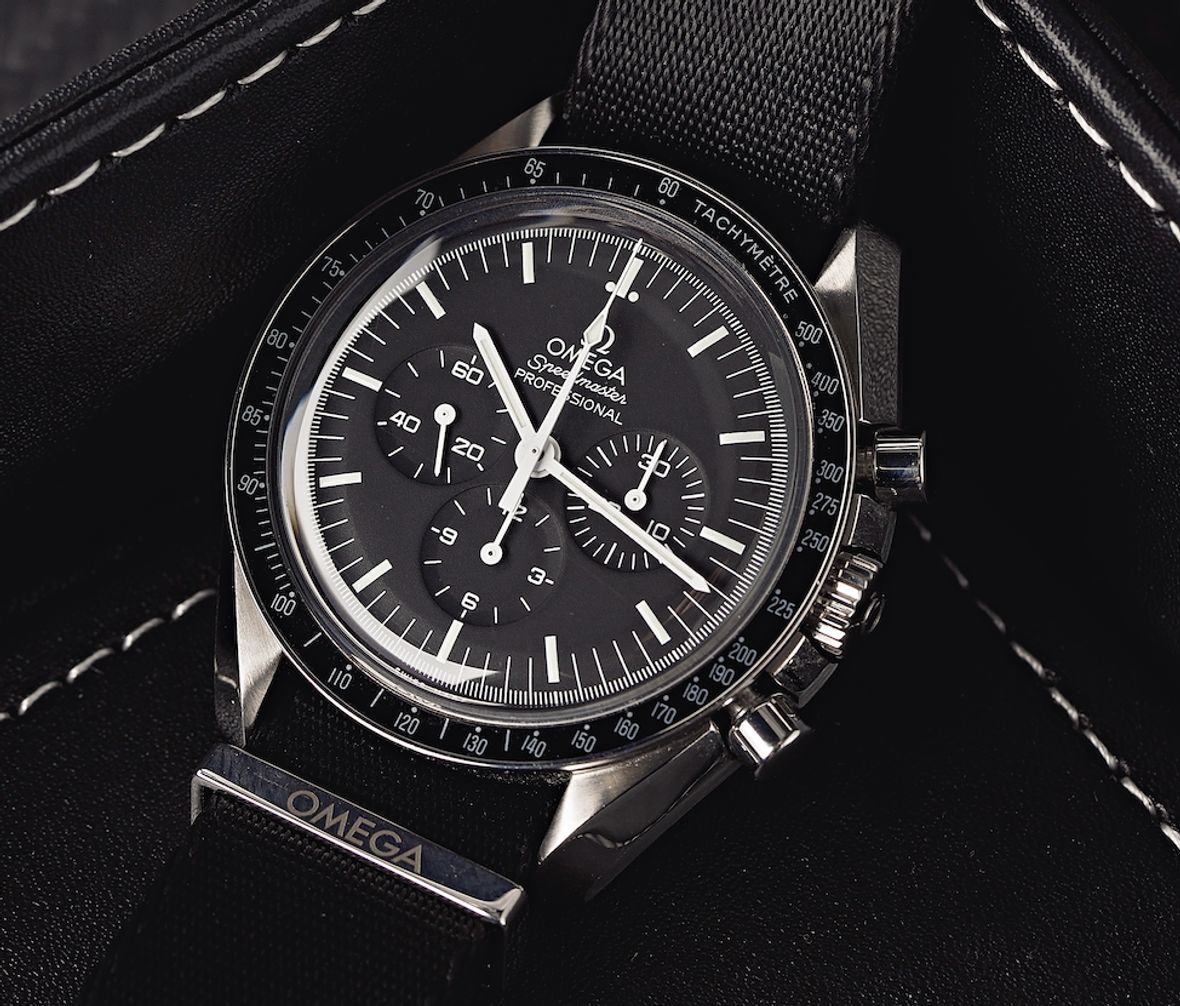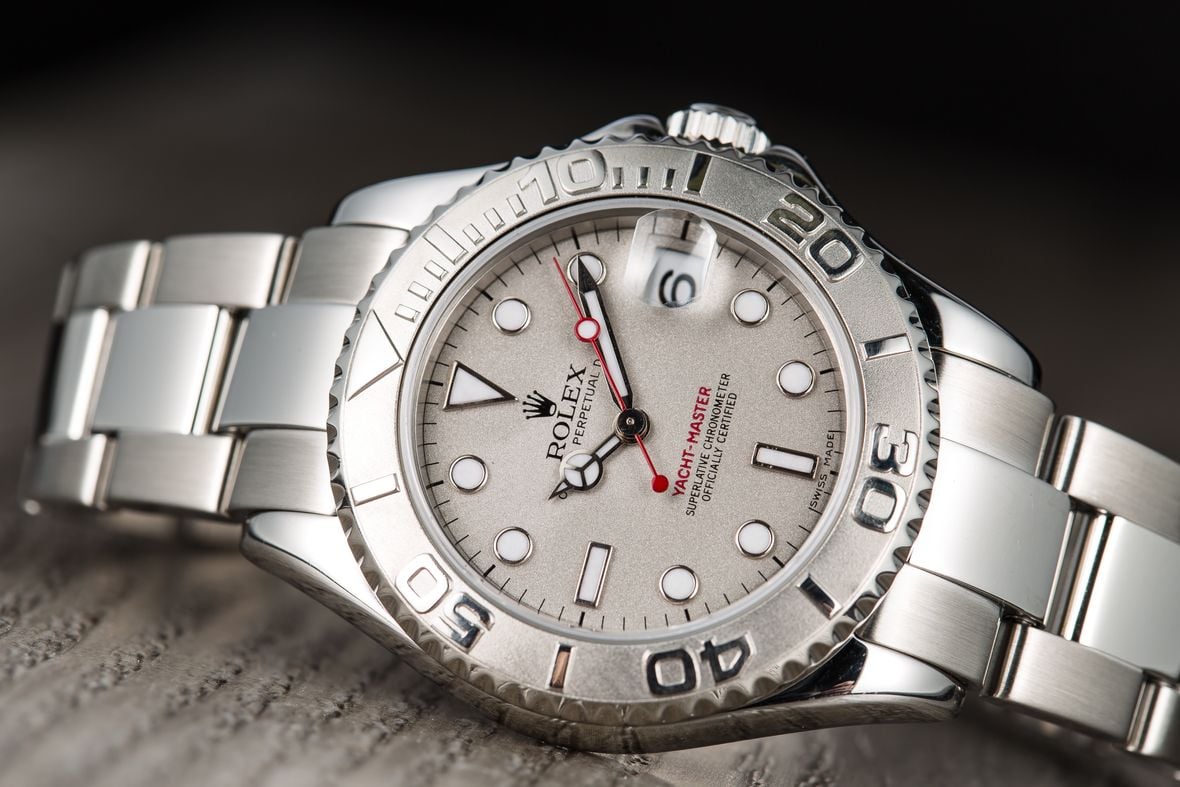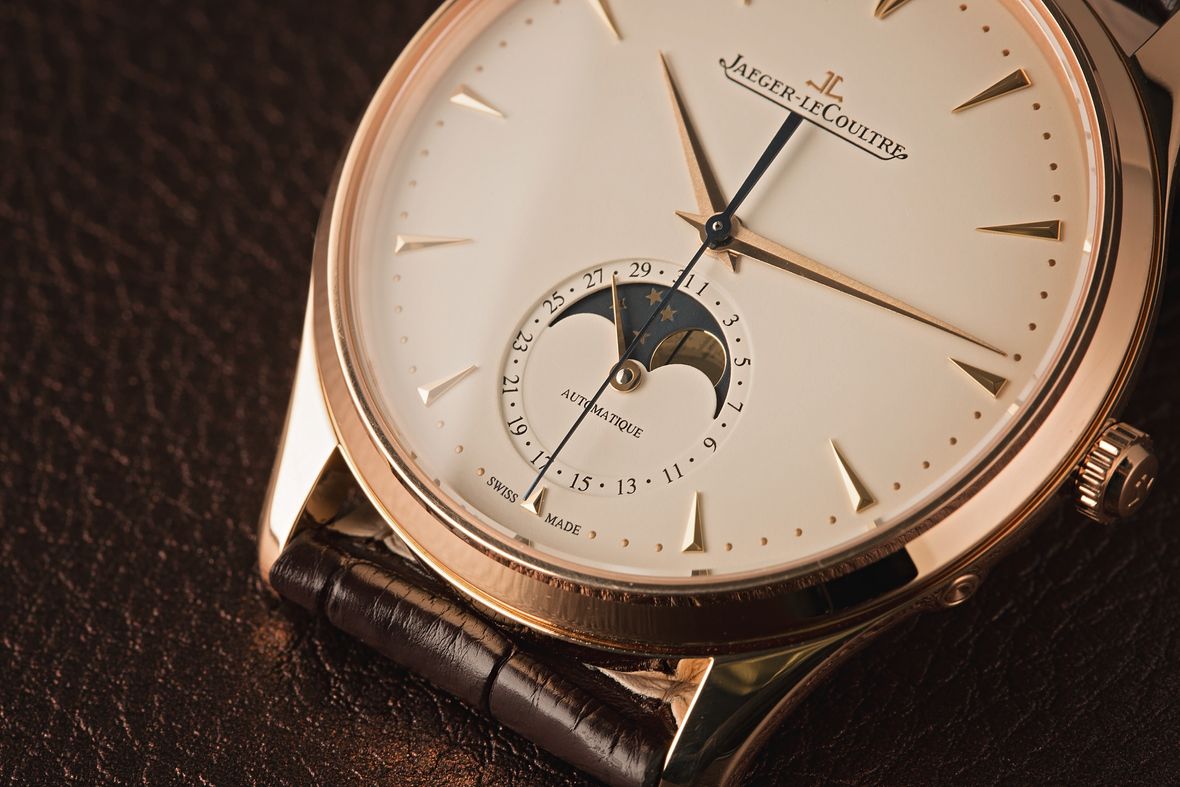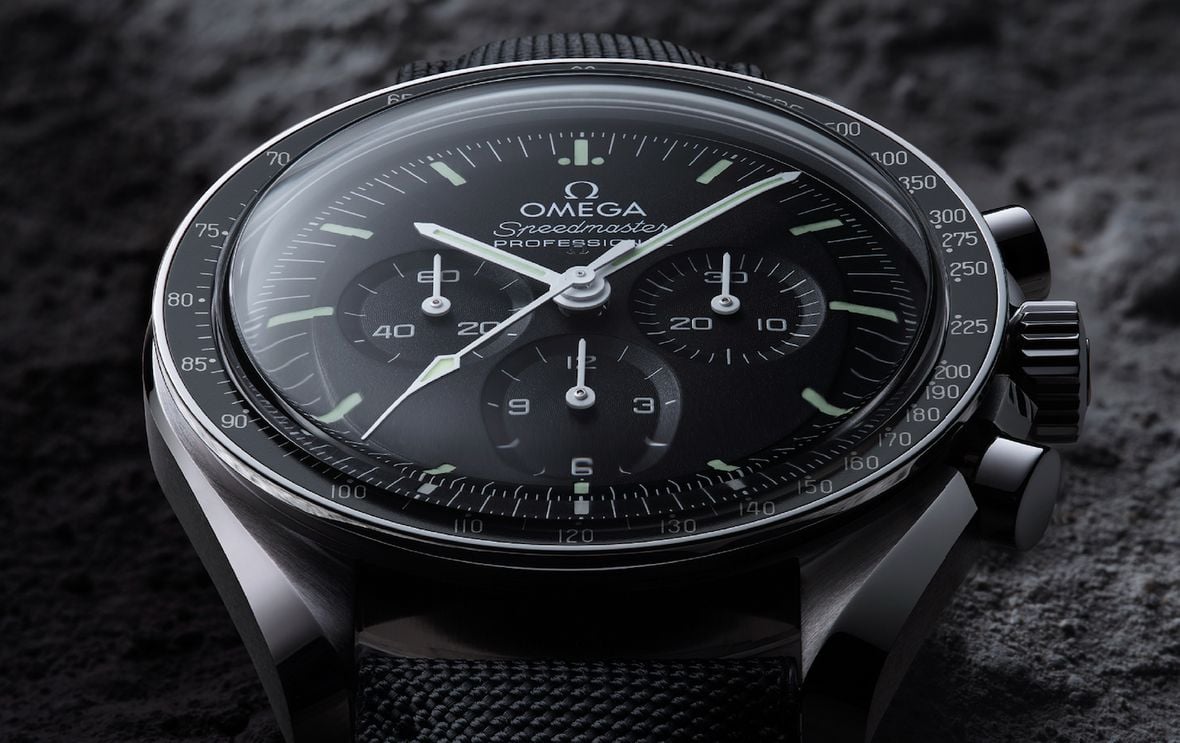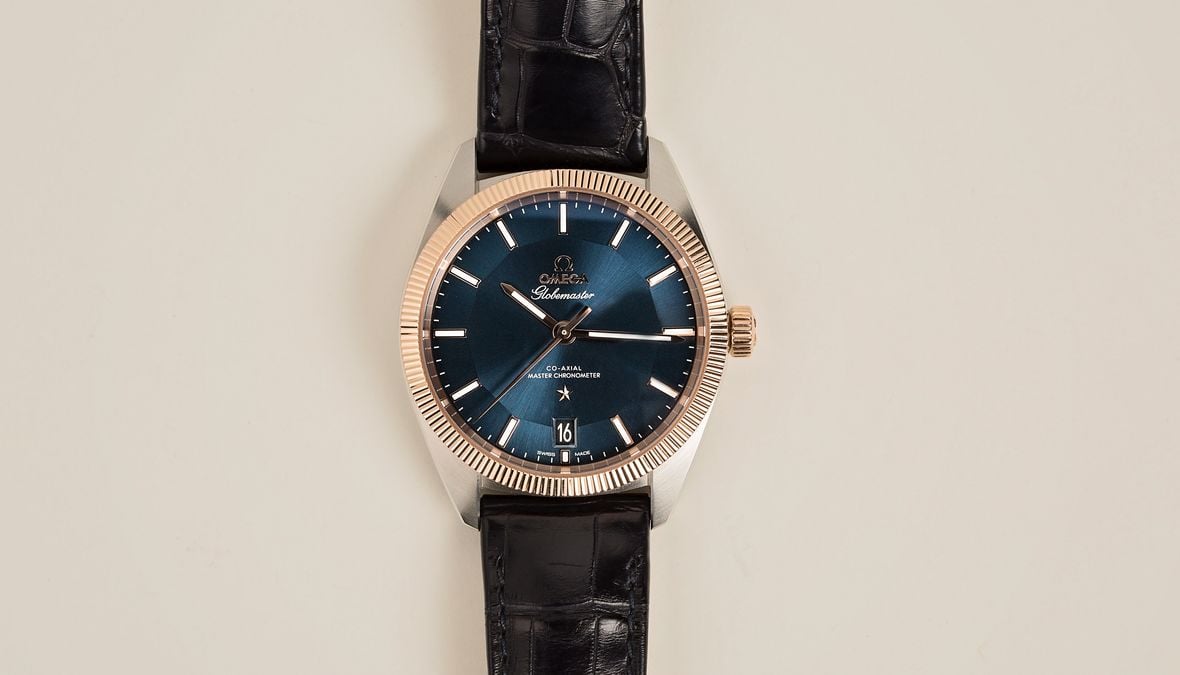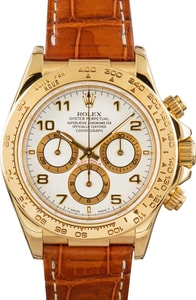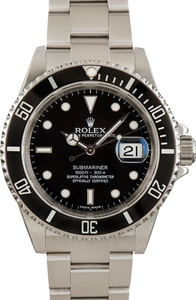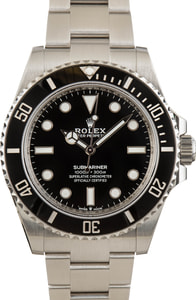The common saying, “if it ain’t broke, don’t fix it” exists for a reason, and possibly no luxury watch follows this piece of advice more closely than the Omega Speedmaster. First launched in 1957 and remaining a cornerstone offering in Omega’s catalog ever since, the Speedmaster has expanded from a single watch into an entire collection of chronograph models that offer a surprising range of diversity to the modern-day buyer.
With that in mind, despite now producing versions of the Speedmaster that are wildly different in design and features and powered by everything from traditional hand-wind movements to hybrid analog/digital quartz movements, Omega still produces a version of the Speedmaster that is largely identical to the model that was worn on the surface of the moon. And it is exactly that watch which we will be taking a closer look at in this review below.
Omega Speedmaster Professional Moonwatch
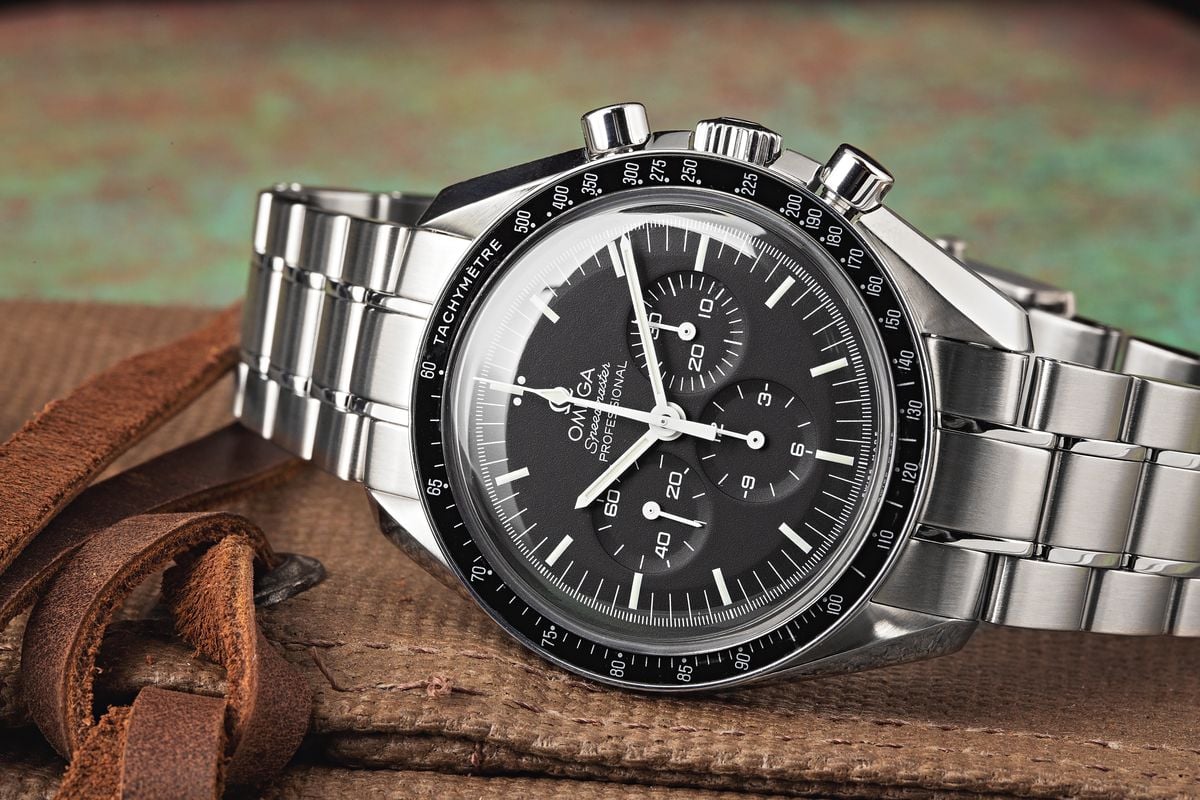
Omega Moonwatch Key Features:
Case Diameter: 42mm
Materials: Stainless steel
Functions: Time + running seconds, 12-hour chronograph
Bezel: Black, tachymeter scale
Dial: Black, luminous hour markers
Crystal: Hesalite (acrylic)
Movement: Cal. 1861
Water Resistance: 5 bar (50 meters / 167 feet)
Strap/Bracelet: Stainless steel bracelet or black leather strap (nylon and velcro straps also included)
Click here for our ultimate buying guide on the Omega Speedmaster.

Which Omega Speedmaster is the Moonwatch?
The “Moonwatch” name specifically applies to the Omega Speedmaster models that most closely adhere to the original design of the original watches that were first used for lunar exploration. A quick visit to the various Omega forums will yield numerous threads in which users debate what should be considered a “true Moonwatch” and opinions will range from only the references that have actually been worn on the moon, to nearly any model within the greater Speedmaster collection.
Part of this disagreement stems from the fact that Omega’s catalog is hardly straightforward. Despite offering one of the largest and most diverse selections of any luxury watchmaker, all Omega watches can be grouped into one of 4 collections: Speedmaster, Seamaster, Constellation, and De Ville. With that in mind, each collection is further divided into a number of sub-collections, and each sub-collection can consist of various different sections within it, with each one of those sections containing numerous different references, depending on options like metal type, case size, and dial color.
Confused yet? Don’t worry, we’re going to clear all of this up before we get into the meat of our Omega Moonwatch review, but we need to first sort out what we mean by “Moonwatch” versus the other models that you may sometimes see discussed in relation to the “Moonwatch” name.
The Official Omega Moonwatch
Omega does have a “Moonwatch” sub-collection within the Speedmaster collection on its website. However, it should be noted that this category has continued to expand over the years as Omega produces new variations of their iconic chronograph wristwatch. At the present time, the “Moonwatch” category contains the following different sections of Speedmaster watches.
– Speedmaster Professional
– Speedmaster Moonwatch Calibre 321
– Speedmaster Apollo 11 50th Anniversary Limited Edition
– Speedmaster Apollo 11 50th Anniversary Moonshine Limited Edition
– Speedmaster “Dark Side of the Moon” Apollo 8
– Speedmaster “Dark Side of the Moon” Alinghi
– Speedmaster Moonwatch “Dark Side of the Moon”
– Speedmaster Moonphase
– Speedmaster Grey Side of the Moon “Meteorite”
– Speedmaster “Grey Side of the Moon”
– Speedmaster “White Side of the Moon”
– Speedmaster Moonwatch “First Omega in Space”
– Speedmaster CK2998 Limited Edition
Clarifying the Moonwatch Definition
Keep in mind that this is just the “Moonwatch” sub-collection of Omega’s greater Speedmaster collection. There are many other sub-collections within the Speedmaster family such as the Mark II, Racing, and X-33 (among others). Additionally, why Omega has chosen to structure the “Moonwatch” category this way on its website certainly doesn’t help matters as there is a significant amount of overlap that exists among certain sections, while others contain watches that are not at all alike.
For example the “Speedmaster Professional” section contains the stainless steel, manually-wound chronographs – the actual topic of our review – along with the solid-platinum model that has an onyx and meteorite dial, the revived Caliber 321 movement, and official retail price of $59,400. Other than their general visual aesthetics and proportions, these two watches are completely different timepieces. In reality, the Apollo 11 50th Anniversary Limited Edition has far more in common with the standard Speedmaster Professional model than the platinum version, yet it exists as its own section within the greater “Moonwatch” category.
Meanwhile, while many of the other sections are devoted to just a single Speedmaster reference, the various “Dark Side of the Moon” watches all feature 44.25mm black ceramic cases, and despite this common theme, they are spread across three different sections within the Moonwatch sub-collection. Technically speaking, all of these can be considered “Moonwatches” and some people even use the “Moonwatch” name to refer to models that actually sit outside of the official Omega Moonwatch category.
All of that being said, for the purpose of this Omega Moonwatch review, we are looking specifically at the most traditional variation of the Speedmaster – the stainless steel model fitted with a manual-wind movement and Hesalite crystal. While there are now quite a few Omega watches that now go by the “Moonwatch” name, there is still only one that retains its NASA flight-certification, and that will be the one that we are taking a closer look at today.
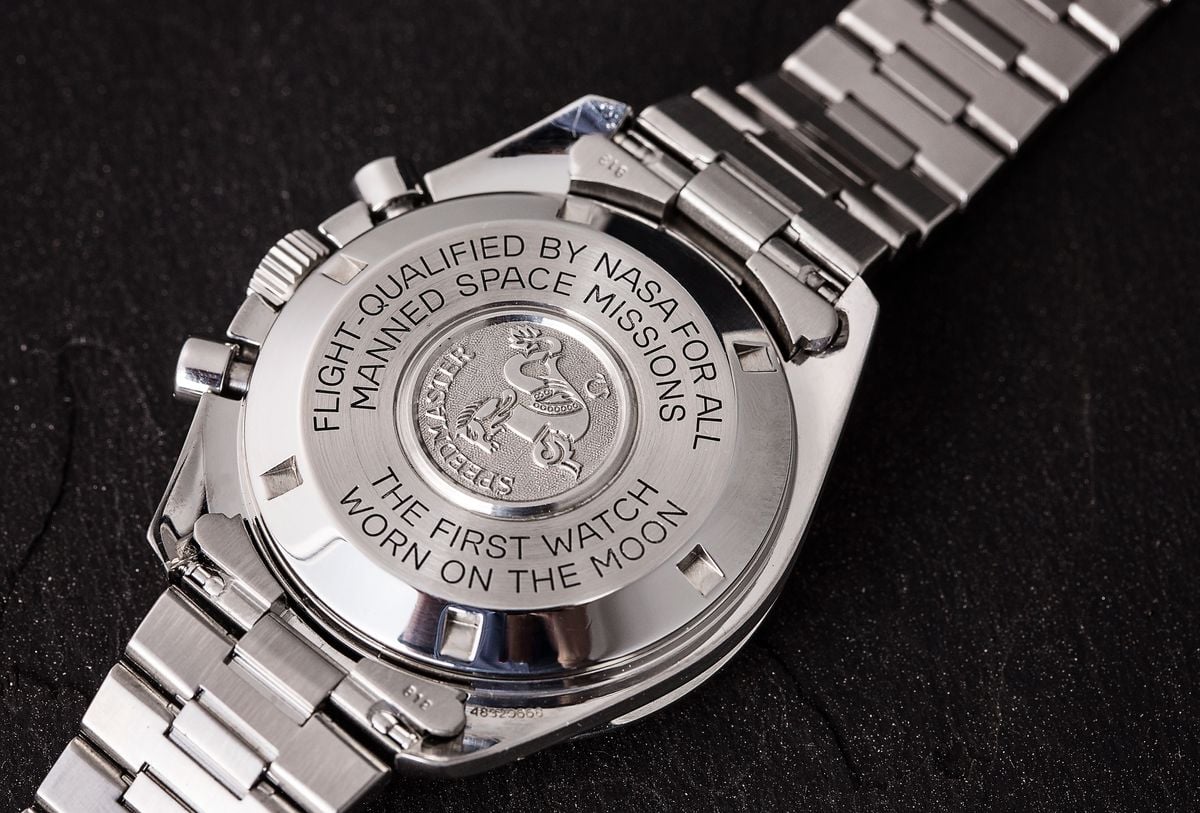
The Omega Speedmaster Professional Moonwatch
The best part about the classic Omega Speedmaster Professional Moonwatch is that it is (for the most part) a vintage watch that is still being made today. In more recent years, there have been an increasing number of vintage-inspired heritage piece – and Omega also offers a number of Speedmaster variations that fall into that category – but the standard Speedmaster Professional Moonwatch is not in any way inspired by a vintage model – it basically is that vintage model; its design has just hardly changed since it was first introduced more than a half-century ago.
Part of the reason for this is that the original design for the watch simply worked, so there was no need to change it. Omega even tried to create a better, purpose-built watch for use in outer space under the Alaska project, but NASA politely declined their efforts, stating that the original Speedmaster model worked fine for its needs at the time. With that in mind Omega has updated the classic Speedmaster Moonwatch a few times throughout history, and when NASA started its space shuttle program in 1978, the Speedmaster was recertified as the official watch since it was fitted with a different movement by that time.
Preserving the status of being flight-certified by NASA is almost certainly the core reason behind the enduring design of the classic Omega Speedmaster Professional Moonwatch. The case-back of the examples produced today proudly reads, “Flight Qualified by NASA for All Manned Space Missions” and to this day, the classic Omega Speedmaster Professional Moonwatch fitted with the Hesalite crystal remains the only watch officially certified by NASA for EVA (use outside of a spacecraft).
Omega Speedmaster Professional Moonwatch References
Although we already got our “Moonwatch” clarification out of the way, it is worth noting that the original NASA-certified Omega Speedmaster Professional Moonwatch exists as two different reference numbers in Omega’s catalog depending on whether it is fitted with a leather strap or bracelet.
Ref. 311.30.42.30.01.005 – Stainless steel bracelet
Ref. 311.33.42.30.01.001 – Leather strap
With that in mind, regardless of whether you opt for the model with the stainless steel bracelet or the black leather strap, Omega also includes a rather large presentation box that includes both a nylon NATO strap and a velcro strap like the one used by astronauts (along with a number of other Speedmaster-themed accessories). Worth noting is that the price difference between strap and bracelet models is a mere $100, with the bracelet model accompanied by an official retail price of $5,350, while the leather strap variant is priced at $5,250.
Other than the wrist-closure systems fitted to the two watches, these two Speedmaster Moonwatch models are entirely identical. Once separated from their respective straps and bracelets, it would be entirely impossible to tell them apart. However, they are not the only stainless steel models that reside within the Speedmaster Professional Moonwatch section of the brand’s catalog, and there is another variation that is nearly identical, with the greatest outward difference being the type of crystal that protects the dial.
Omega Speedmaster “Sapphire Sandwich”
It is also worth noting that there is another variation of the Omega Speedmaster Professional Moonwatch that is otherwise identical to the standard NASA-certified model, except for the crystal, movement, and case-back fitted to the two watches. Known as the “Sapphire Sandwich” this variation features a sapphire crystal over the dial (rather than Hesalite), and a sapphire display caseback on the other side of the watch – hence its “Sapphire Sandwich” nickname.
Due to the fact that the movement sits on full display in the Sapphire Sandwich Speedmaster, Omega actually fits this version of the Moonwatch with a different movement. While the standard Speedmaster Professional Moonwatch receives the Caliber 1861, the Sapphire Sandwich model is fitted with the Caliber 1863. The two movements are identical in terms of functionality and performance; however since the Cal. 1863 is visible, it receives a greater degree of decoration and a metal chronograph brake, rather than one constructed from Delrin (a low-friction plastic material).
Beyond these relatively small differences (which admittedly do account for a rather significant impact on the overall look and feel of the watch), the “Sapphire Sandwich” is otherwise identical to the standard Speedmaster Professional model, and just like its NASA-certified sibling, it exists in the form of two different references in Omega’s catalog depending on whether it is fitted with a leather strap or stainless steel bracelet.
Ref. 11.30.42.30.01.006 – Stainless steel bracelet
Ref. 311.33.42.30.01.002 – Leather strap
Just like with the Cal. 1861 and Hesaliate crystal variations of the Moonwatch, the two “Sapphire Sandwich” Speedmaster models are priced only $100 apart, and both come with the same box that includes the two additional strap options. However, when purchased brand-new at retail, the “Sapphire Sandwich” Speedmaster models cost $1,000 more than the classic versions, with official retail prices of $6,350 for the metal bracelet version, and $6,250 for the model paired with the black leather strap.
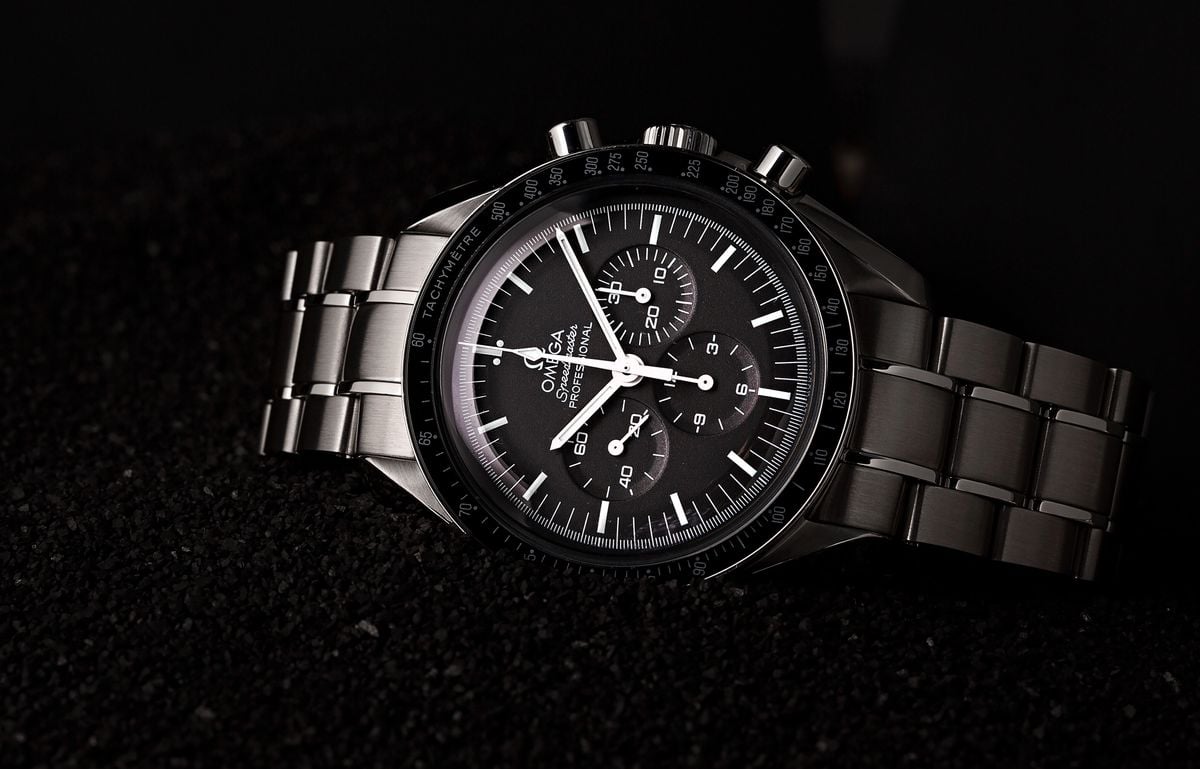
Omega Moonwatch Look and Feel
If you like vintage watches, you are going to love the classic NASA-certified Omega Speedmaster Professional Moonwatch. Blindfolded and just holding the watch in your hand you would be hard-pressed to tell the difference between a brand-new example and its true vintage counterpart.
Everything about the watch from its 42mm stainless steel case to its domed Hesalite crystal have remained virtually unchanged since man first landed on the moon in 1969. Admittedly, the case-back has received some updated engravings, and the dial, hands, and bezel have received a number subtle updates over the years. However, the overall design of the watch itself – especially in regards to its physical and tactile profile – is virtually identical to the model that was first worn on the moon many decades ago.
The Case
Consistency in design is not a bad trait, and it is the timeless and purpose-built aesthetic of the Speedmaster that is easily the watch’s most celebrated trait. An important detail to remember is that the case’s official 42mm measurement is larger than the watch actually wears on the wrist. A key reason for this is the twisted lugs (typically referred to as “lyre lugs”) and the way that the asymmetric case includes small guards for the winding crown and chronograph pushers.
On many sport and tool watches, the edge of the bezel slightly sits beyond the edge of the case, giving the piece a slightly larger presence than its case diameter measurement might indicate. On the Omega Speedmaster Professional Moonwatch, both the right and left sides of the case extend beyond the outer edge of the bezel, with the right-hand side extending to nearly the end of the winding crown.
Despite its 42mm case diameter, the classic Omega Speedmaster Professional Moonwatch actually wears noticeably more compact than other watches that have even smaller case diameters, such as the 41mm version of the Rolex Datejust. A big contributing factor to the Speedmaster’s extreme wearability is the difference between the diameter of the case and the diameter of the bezel. While the case is 42mm, the outer diameter of the bezel actually measures under 40mm (about 39.7), and this is the reason why most people say that the classic Omega Speedmaster Moonwatch wears more like a 40mm watch.
The Dial and Bezel
The Speedmaster’s ultra-wearable case and bracelet are certainly among the watch’s most celebrated features, but possibly nothing is more responsible for the overall iconic design of the Omega Speedmaster Moonwatch than its black dial and black tachymeter bezel. Perfectly balanced and the true definition of at-a-glance legibility, the white markings offer maximum contrast against the dial’s matte black surface.
All hands are also finished completely in white to offer maximum contrast against the dial and eliminate the possibility of glare when viewed in bright direct light. Additionally, the hour, minute, and chronograph seconds (along with the hour markers on the dial) are also outfitted with bright glowing Super-LumiNova for maximum legibility in low-light conditions.
The Omega Speedmaster was the first chronograph watch to move the tachymeter scale to the outer bezel, and just like the dial on the classic Moonwatch model, the bezel is black in color with high-contrast markings. As the bezel on the modern Omega Speedmaster Professional Moonwatch features an anodized aluminum bezel insert, the tachymeter scale appears in silver rather than flat-white, and these silver markings perfectly match the stainless steel of the case, while simultaneously providing exceptional contrast and legibility.
The very first tachymeter bezel fitted to the Speedmaster was not black at all and was instead engraved steel. However a black tachymeter bezel has been a hallmark feature of the Omega Speedmaster since the late 1950s, and despite numerous slight variations existing throughout the years, it remains present and correct on the modern Moonwatch reference that the brand produces today
Additionally, the dial has undergone a number of subtle changes through the years, such as the transition from applied logos to printed logos and the switch from tritium to Super-LumiNova, the core design of the dial has remained unflinchingly constant, and it is widely considered to be among the most legible chronograph dials ever created.
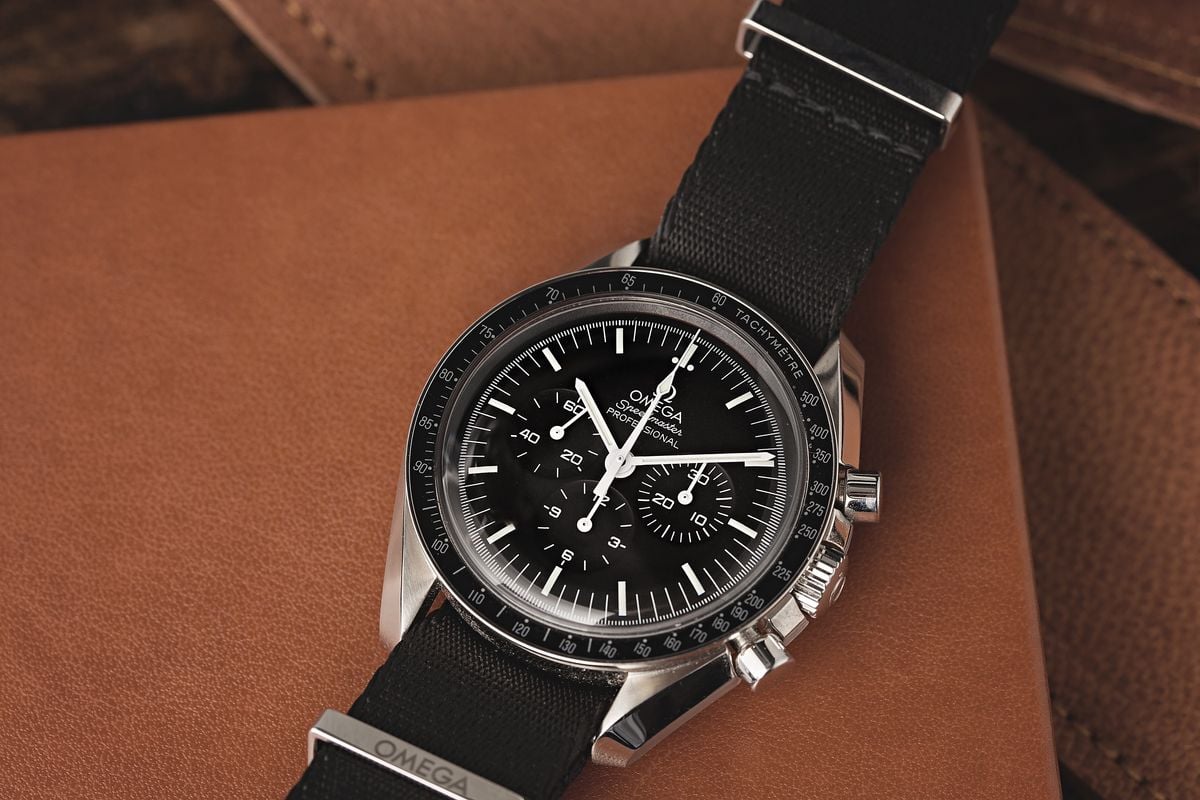
Omega Moonwatch Movement
The current version of the classic Omega Speedmaster Professional Moonwatch is powered by Omega’s Caliber 1861 movement. Based on the design of the Lemania 1873, the Omega Cal. 1861 is a cam-actuated integrated chronograph movement, and the current evolution of its predecessor, the Caliber 861. While it lacks the Master Chronometer certification now offered by most of Omega’s newer in-house movements, the Caliber 1861 is a tried and true workhorse with a long track record of proven reliability and accurate timekeeping.
Omega Caliber 1861
Winding: Manual (hand-wind)
Display: Analog
Diameter: 27mm
Frequency: 21,600 beats per hour (3Hz)
Jewels: 18
Power Reserve: 48 hours
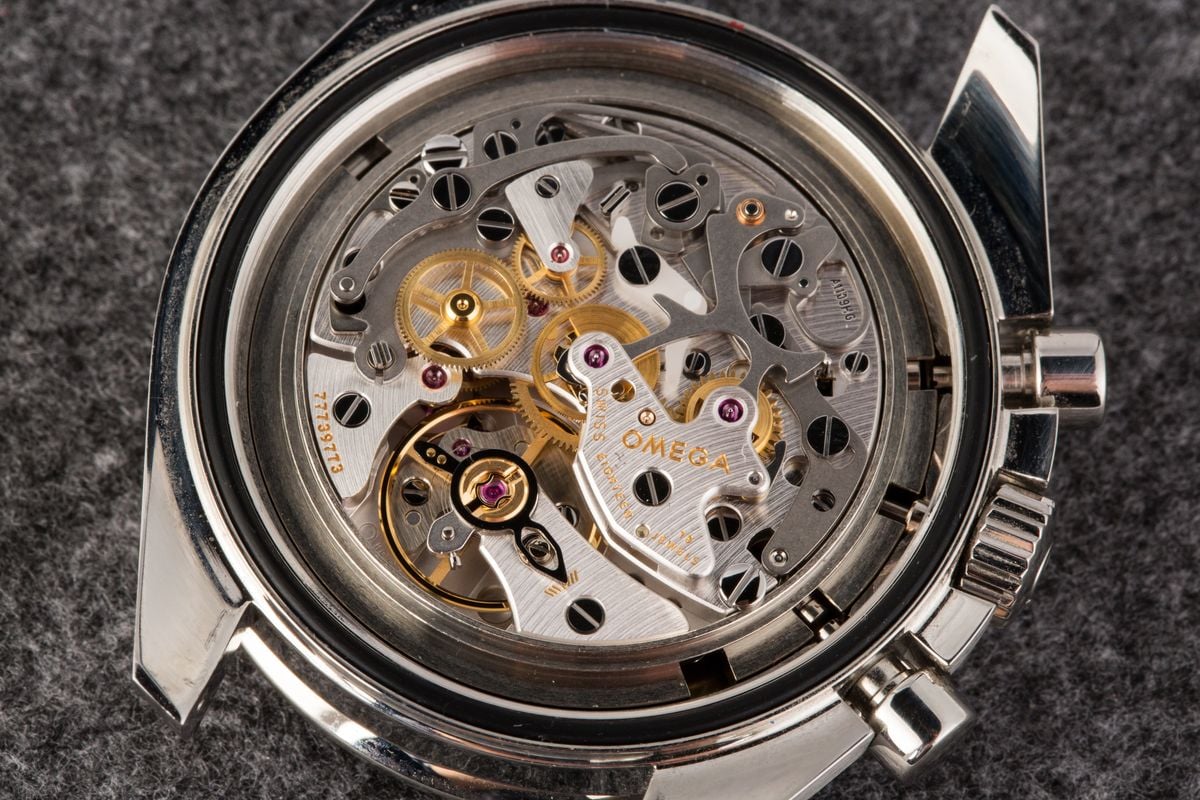
Using the Omega Moonwatch on Earth
Today, the Omega Speedmaster Professional Moonwatch is a flat-out horology legend for its role in space exploration. However, it must be remembered that the Speedmaster was originally designed for the automotive racing crowd, and it only became the official watch of NASA because of how well it was able to stand up to the various tests that it was subjected to in order to be qualified for spaceflight.
The Omega Speedmaster Moonwatch is not a purpose-built tool for astronauts; it is simply a highly functional chronograph that is so good as its job of being a wrist-mounted, time-telling tool that NASA decided it was up to the task of going to the moon. The very first Speedmaster to make it to space wasn’t a NASA-issued watch at all; it was the personal watch of astronaut Wally Schirra who wore his during the Sigma 7 mission.
Not being designed specifically for astronauts is what allows the classic Omega Speedmaster Professional Moonwatch to be such a great everyday watch for use here on Earth. However, the same traits and features that make the Moonwatch well-suited for space exploration certainly also have their uses in day-to-day life.
Legibility is always important – and if the Speedmaster is good enough for NASA’s pilots while they navigate a rocket through outer space, it is probably more than legible enough for you to be able to quickly reference the time while you drive on a dark highway. The winding crown is easy to rotate and the chronograph pushers are easy to operate. In terms of outright functionality, there isn’t a whole lot more you can ask for out of a mechanical watch.
Lastly, many of NASA’s tests pertained to the durability of the watch in various extreme conditions, and the Omega Speedmaster was the only one to pass them. While the classic version of the Moonwatch may feel almost fragile with its domed Hesalite crystal, rest assured that both the crystal and watch are more than tough enough for everyday wear and use, and you can always polish out any scratches and scuffs the crystal might receive with a dab of PolyWatch and a few minutes of elbow grease.
Omega Speedmaster Moonwatch Water Resistance
The only potential drawback to the classic Omega Speedmaster Moonwatch is its relative lack of water resistance. The current production models offer 50 meters (165 feet) of water resistance, and while this is more than enough to safeguard you from incidental contact and the occasional swim (let alone whatever non-existent liquid water you might find in space), the watch itself was not designed for aquatic use, and the 50 meters offered by the Moonwatch is a significant amount away from the 300 meters offered by Omega’s dive watches.
Additionally, since the classic Omega Moonwatch is powered by a manually-wound movement, the gaskets near the stem will receive more wear than on automatic watches due to daily winding. Between that and the lack on an ability to secure the chronograph pushers, it may be best to strap on a different watch when you go fo a swim, but by no means does this mean you need to hide your Speedmaster under your sleeve when it starts raining or worry about getting pushed into the pool at your next family barbecue.
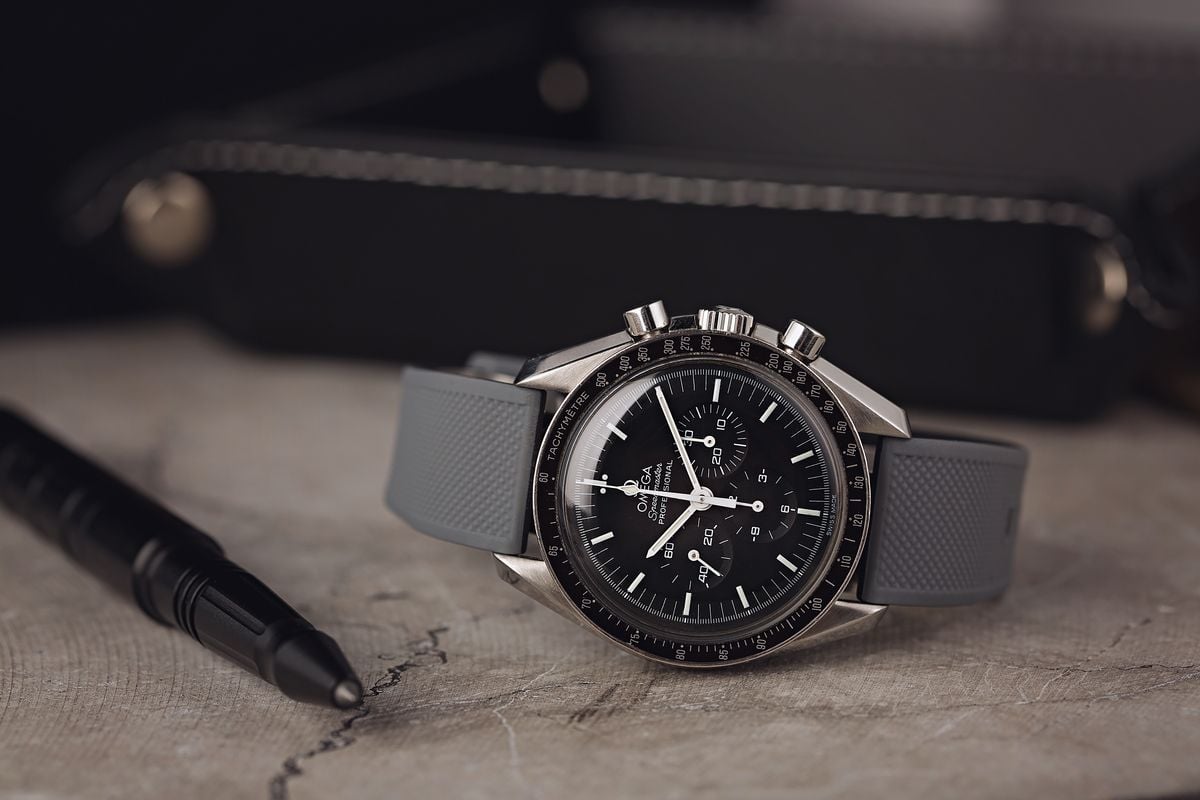
The Last Watch Worn on the Moon
In addition to being the first watch worn on the moon, the classic Omega Speedmaster Moonwatch was also the last watch to be worn on the moon. Capt. Andrew “Gene” Cernan, an American naval officer, fighter pilot, and astronaut traveled into space three times, wearing an Omega Speedmaster during all 3 missions, and then later becoming a brand ambassador for the historic Swiss watch manufacturer.
In addition to visiting space numerous times, Cernan also walked on the moon during the Apollo 17 mission, and holds the title of being the last man to set foot on the moon when he boarded the lunar lander after his final moonwalk on December 13, 1972. On his wrist was an Omega Speedmaster reference ST105.003, making the Speedmaster both the first and last watch to ever be worn on the surface of the moon.
Final Thoughts on the Omega Speedmaster Moonwatch
Some things in life are classics for a reason, and the Omega Speedmaster Moonwatch is one of them. Aside from its remarkable history of space exploration and the legendary tales of Omega’s engineering, the Moonwatch is just a flat-out great mechanical chronograph. Its design and case proportions are versatile enough to work with a wide variety of wrist sizes and attires, and it could easily be that “one good watch” that a person wears for the rest of their life.
For over half a century the Omega Speedmaster has been the go-to watch for astronauts, and that is a stronger endorsement than any possible brand ambassador could ever offer. Its enduring design is truly deserving of the term “iconic” – and while the classic Moonwatch may almost look outdated compared to some of its siblings in Omega’s modern catalog, there is actually a very good reason for that. The design of the Omega Speedmaster Moonwatch hasn’t changed over the years simply because it hasn’t had to change. Remember, if it ain’t broke, you don’t fix it!

